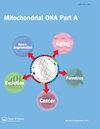野生沼泽鹿种群的遗传特征:迁地保护和法医学意义
IF 0.6
4区 生物学
Q4 GENETICS & HEREDITY
引用次数: 1
摘要
沼泽鹿(Rucervus duvaucelii)是印度《1972年野生动物保护法案》(Wildlife (Protection) Act 1972)下的一种特有种。根据鹿角大小的变化,将其分为西部(R. duvaucelii duvaucelii duvaucelii duvaucelii branderi)、中部(R. duvaucelii ranjitsinhii)和东部(R. duvaucelii ranjitsinhii)三个亚种。为了规划不同生物气候区和野生动物法医中广泛物种的有效迁地和原地保护,由于地理位置和生殖隔离,建议使用遗传特征来确定形态/生态型。尽管有这些形态,但对这三个亚种的遗传特征知之甚少,因此除了少数研究外,没有严格的基于亚种的育种计划来保留圈养种群的进化特征,以便随后重新引入。我们利用mtDNA基因组的细胞色素b (400 bp)描述了这三个亚种的遗传特征。DNA序列数据显示,三个亚种中有11个可变位点。发现了两个泛系进化枝,即印度中部和西部-东部种群,而西部和东部种群是单系进化枝,在进化枝内的自举值为69%。我们建议有必要在动物园圈养繁殖中使用不同的分子mtDNA标记对这三个亚种进行分类,以保持不同地理品系的遗传多样性,并使用亚种特异性的固定状态核苷酸来评估偷猎的程度,以避免在印度发生任何随机的人口统计。本文章由计算机程序翻译,如有差异,请以英文原文为准。
Genetic characterization of wild swamp deer populations: ex situ conservation and forensics implications
Abstract Swamp deer (Rucervus duvaucelii) is an endemic, Scheduled I species under the Wildlife (Protection) Act 1972, India. According to variations in antler size, it has been classified into three subspecies, namely Western (R. duvaucelii duvaucelii), Central (R. duvaucelii branderi), and Eastern (R. duvaucelii ranjitsinhii). For planning effective ex situ and in situ conservation of a wide-ranging species in different bioclimatic regions and in wildlife forensic, the use of genetic characterization in defining morpho/ecotypes has been suggested because of the geographic clines and reproductive isolation. In spite of these morphotypes, very little is known about the genetic characteristics of the three subspecies, hence no strict subspecies-based breeding plan for retaining the evolutionary characteristics in captive populations for subsequent re-introduction is available except for a few studies. We describe the genetic characteristics of these three subspecies using cytochrome b of the mtDNA genome (400 bp). The DNA sequence data indicated 11 variable sites within the three subspecies. Two paraphyletic clades, namely the Central India and Western-Eastern populations were found, whereas the Western and Eastern populations are monophyletic with a bootstrap value of 69% within the clade. We suggest the need of sorting these three subspecies using different molecular mtDNA markers in zoos for captive breeding purposes so as to retain the genetic diversity of the separate geographic clines and to use a subspecies-specific fixed-state nucleotide to assess the extent of poaching to avoid any population demography stochastically in India.
求助全文
通过发布文献求助,成功后即可免费获取论文全文。
去求助
来源期刊

Mitochondrial Dna Part a
Biochemistry, Genetics and Molecular Biology-Genetics
CiteScore
3.00
自引率
0.00%
发文量
6
期刊介绍:
Mitochondrial DNA Part A publishes original high-quality manuscripts on physical, chemical, and biochemical aspects of mtDNA and proteins involved in mtDNA metabolism, and/or interactions. Manuscripts on cytosolic and extracellular mtDNA, and on dysfunction caused by alterations in mtDNA integrity as well as methodological papers detailing novel approaches for mtDNA manipulation in vitro and in vivo are welcome. Descriptive papers on DNA sequences from mitochondrial genomes, and also analytical papers in the areas of population genetics, phylogenetics and human evolution that use mitochondrial DNA as a source of evidence for studies will be considered for publication. The Journal also considers manuscripts that examine population genetic and systematic theory that specifically address the use of mitochondrial DNA sequences, as well as papers that discuss the utility of mitochondrial DNA information in medical studies and in human evolutionary biology.
 求助内容:
求助内容: 应助结果提醒方式:
应助结果提醒方式:


